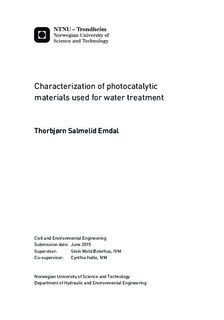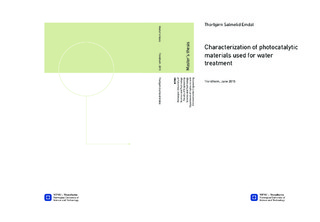| dc.description.abstract | As the pressure on water bodies throughout the world is increasing, good water quality
obtained through water treatment is essential to secure health and welfare of the population. Many chemical compounds used in industry and agriculture with discharge to
drinking water sources or vulnerable recipients have not been examined properly before
approval.
Many of these chemicals have eventually been considered to be toxic or hostile towards
the environment, hence they are called micro-pollutants. Some of the newly discovered
micro-pollutants are also known as emerging contaminants, but this is certainly not a
well-defined group of species (K¨ummerer 2011), even though it is frequently reported in
scientific papers.
Examples of such compounds are pharmaceuticals, dyes, personal care products, soaps
and pesticides. Actually, some of them threaten to destroy water sources and other aquatic
environments.
Unfortunately, conventional treatment methods are not designed to remove micropollutants. However, so-called advanced oxidation processes (AOPs) are up-and-coming
water treatment processes that are promising for this matter. In this thesis one of the
most well-known, but least understood AOPs are examined. It is called photocatalysis
with the use of TiO
2 and UV-LED.
Further, experiments designed to find the bandgap of a large selection of materials of
modified TiO
2 have been conducted for this thesis. The modification has been conducted
through doping with metal ions. Some of the most promising materials from the bandgap
experiments were put in a photoreactor to find the radical production compared to a
reference TiO
2 material.
The results from the bandgap analyses showed that most of the materials had decreased
bandgap compared to the reference at 3.16 eV. In particular, the manganese-doped TiO2
materials showed the highest decrease, down to 2.89 eV for one of the samples.
Meanwhile, the radical production experiments had some promising results, but as
duplicates and triplicates of the experiments were executed, none of them were reproducible. In other words, the results from the radical production were not valid and could
therefore not be used for extensive discussion.
Furthermore, this made large parts of the master thesis pointless, since the radical
production is a substantial part of the process. For the future work in the project, the
experiments and the revealed weaknesses may, however, contribute to a better setup and
procedure for further testing. | |

